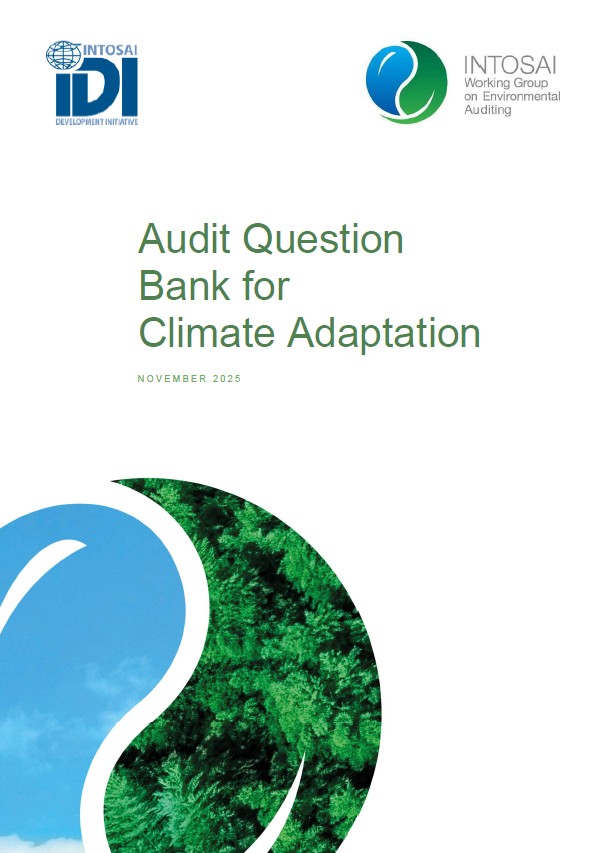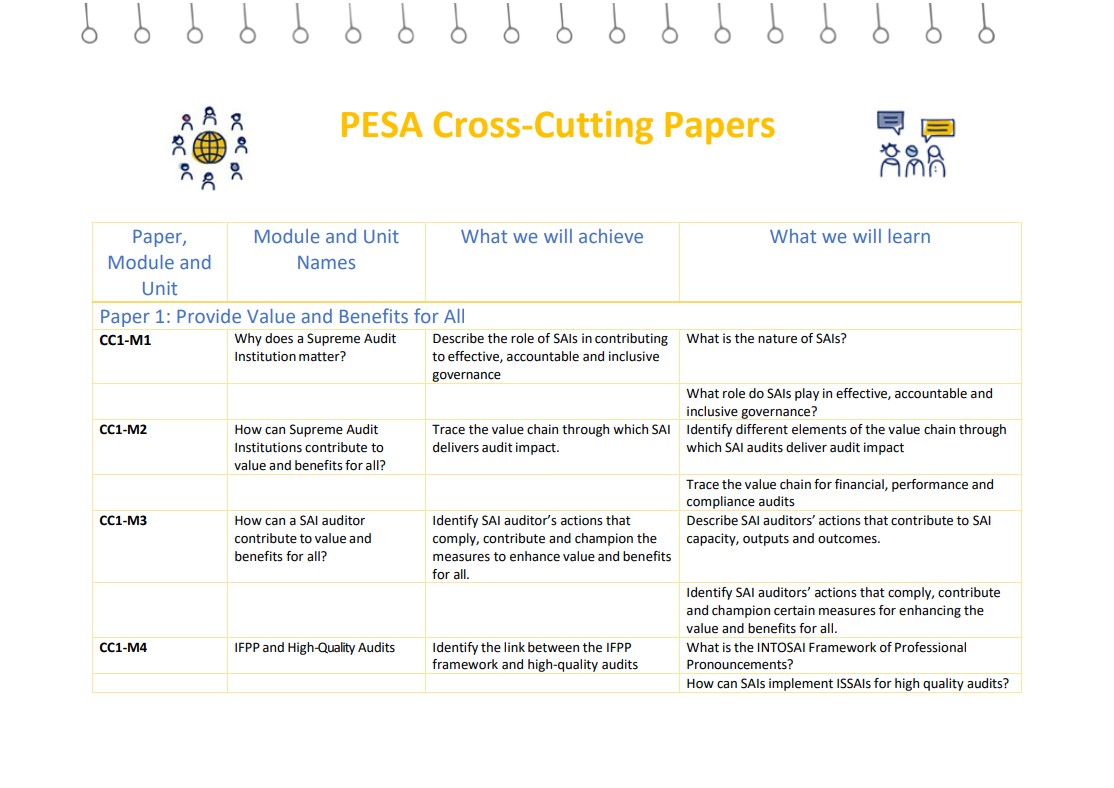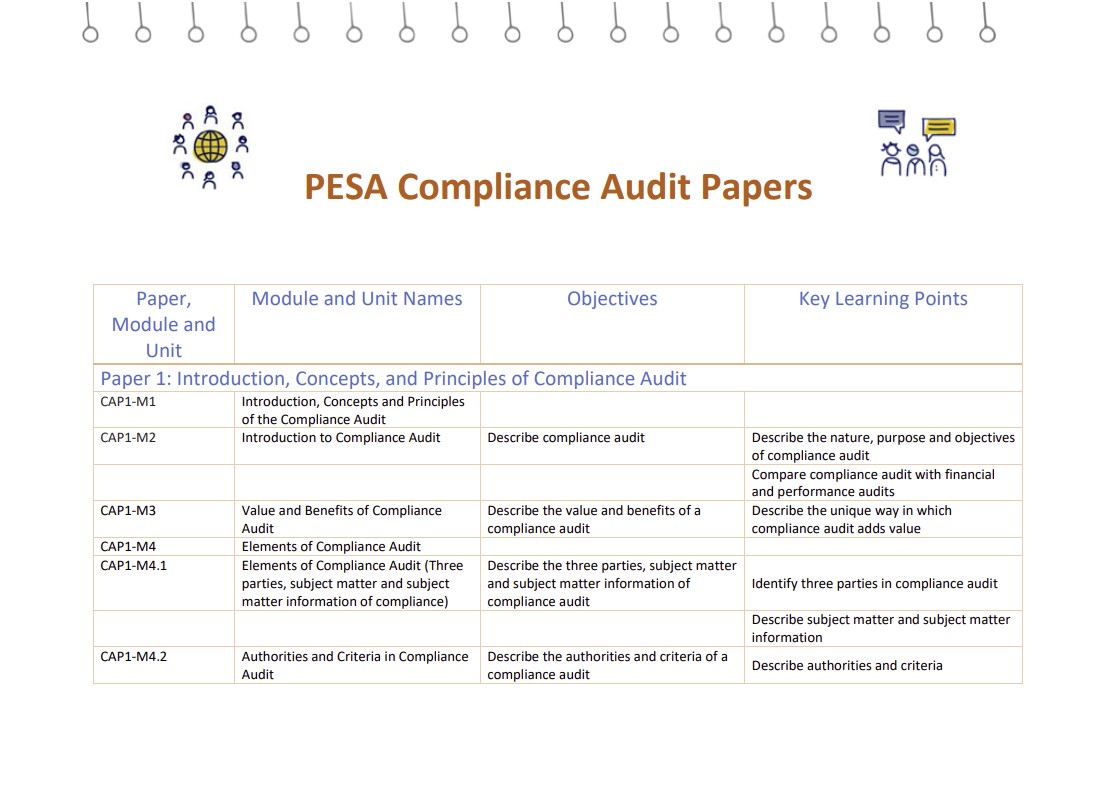PESA – Professional Qualification for SAI Auditors
Compliance Audit Learning Outcomes
Compliance audit learning outcomes start with reflections on the value and benefits of compliance audit. Through the five papers, the SAI Auditor is expected to develop knowledge and skills related to, the principles of compliance audit and the process of conducting a high quality compliance audit as per ISSAIs.
──Tara
Compliance Audit Mentor

PAPER 1: Introduction, concepts, and principles of compliance audit
By studying this paper, the SAI Auditor will achieve the following learning outcomes:
- Describe compliance audit and the value and benefits of compliance audit.
- Identify the elements of compliance audit. Describe subject matter, authorities and criteria, and the three parties of compliance audit; Explain the concept of assurance in compliance audit.
- Describe the general principles of compliance audit and the principles related to compliance audit process.
PAPER 2: Topic selection and pre-engagement considerations
By studying this paper, the SAI Auditor will achieve the following learning outcomes:
- Describe the compliance framework in public sector entities
- Formulate SAI level annual work plan for compliance audit, identify documentation and quality control requirements in compliance audit and describe communication in compliance audit
- Identify the ethical requirements in compliance audit
PAPER 3: Engagement level compliance audit planning
By studying this paper, the SAI Auditor will achieve the following learning outcomes:
- Outline the compliance audit planning process.
- Determine subject matter, audit scope and describe the subject matter operations, identify authorities and criteria of a compliance audit .
- Describe internal control system, compare aspects of internal control frameworks, and evaluate the internal control system of the entity .
- Identify inherent risk, control risk, and fraud risk and assess the identified risks and calculate materiality at planning stage.
- Design audit procedures and manage risks in compliance audit, prepare audit plan for compliance audit, and perform quality review at planning phase.
PAPER 4: Gathering and evaluating audit evidence
By studying this paper, the SAI Auditor will achieve the following learning outcomes:
- Select sample for a compliance audit in SAI context.
- Gather sufficient and appropriate evidence, identify the methods of gathering audit evidence, outline the process of documenting audit evidence.
- Document the results of an observation and physical verification, Outline the steps in using observation</strong > and physical verification.
- Document audit findings and overall conclusions based on evaluation of evidence.
PAPER 5: Reporting and follow up
By studying this paper, the SAI Auditor will achieve the following learning outcomes:
- Describe the principles of compliance audit reporting, and the elements of a report for two types of compliance audit engagement
- Formulate conclusions, opinions and recommendations for direct reporting and attestation engagement
- Determine the key considerations and key stakeholders in communicating the report and perform quality review of the audit report
- Quality review the audit report
- Determine key considerations in communicating the report and they key stakeholders that the report should reach
- Describe the impact framework for compliance audit



